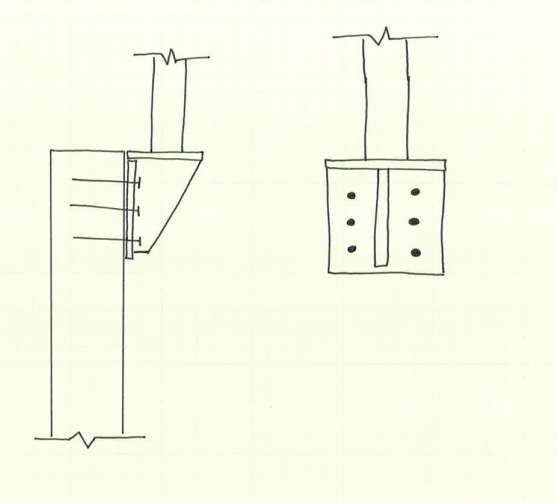spieng89
Structural
- Jun 30, 2015
- 172
I have a situation where a temporary column is required and due to contractor constraints a steel corbel or seat connection is required (see attached/below) to support column adjacent to concrete wall. My question is besides checking the anchorage to the concrete wall, weld connection of stiffener to seat/sideplate, is there a localized effect I need to consider on the HSS bearing on the baseplate? In other words even if there is pure axial load, will the HSS want to bend around the stiffener? Also, is there any other effects I may not be considering?


